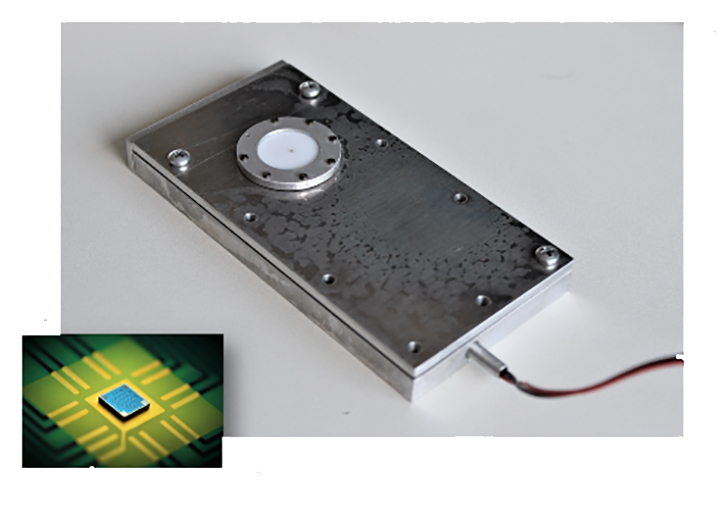eHarsh: Sensor systems for extremely harsh environments, proof of concept for CMUT signal performance
Conventional piezoelectric transducers, used in acoustic borehole televiewers, are bulky, have high acoustic impedance and narrow bandwidth, and are temperature sensitive. In harsh environments such as high temperature geothermal explorations, these transducers have thermal limitations. Within the framework of Fraunhofer’s lighthouse project “eHarsh”, Fraunhofer ENAS is investigating the feasibility of using Capacitive Micromachined Ultrasound Transducer (CMUT), which can operate at high temperatures (due to its non-piezo based structure), for borehole imaging.
The transducers tested in this project were single element 2D arrays of CMUT cells fabricated at ENAS using a wafer bonding process. For testing purposes, the transducer (3 x 3 mm in size) was mounted on a PCB, enclosed in an oil-filled aluminium housing, which incorporates a Teflon acoustic window.
The characterizations were performed individually for transmit and receive performances, in oil and in a laboratory-prepared drilling mud (typically a mixture of bentonite and water). In transmit mode, a calibrated hydrophone was used to measure the acoustic pressure that the transducer generates. The results showed that the encased transducer could provide measurable signals at distances over 5 cm even while immersed in a mimicked borehole drilling mud. In receive mode, a calibrated acoustic wave transmitter (a piezo disc) was employed and the response of the transducer, amplified by a custom designed receive circuit, was recorded. The experimental results obtained are promising and suggest that a CMUT-based probe can be optimally designed for use in borehole imaging applications.
 Fraunhofer Institute for Electronic Nano Systems
Fraunhofer Institute for Electronic Nano Systems